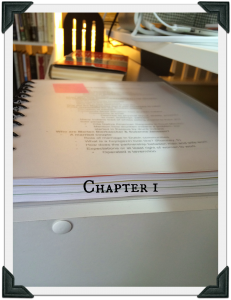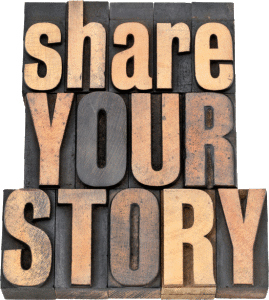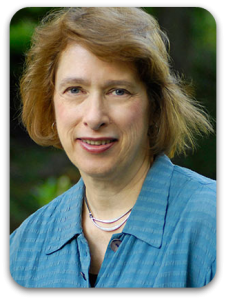 Have you ever reached a point in your writing where it seems like no matter what words you put on to the page, they just rehash the same ideas and the same words over and over?
By mid-August I had reached that point with Chapter 1 of my book. It was a brand new chapter, that I over researched, and every time I tried to rewrite and improve my draft, the same ideas and words appeared on the page.
Have you ever reached a point in your writing where it seems like no matter what words you put on to the page, they just rehash the same ideas and the same words over and over?
By mid-August I had reached that point with Chapter 1 of my book. It was a brand new chapter, that I over researched, and every time I tried to rewrite and improve my draft, the same ideas and words appeared on the page.
I decided it was time to take a break from the chapter.
Before I shelved it, I organized all of my thoughts and printed out what I had written. Today, my unfinished chapter sits just out of sight, neatly packaged in a notebook I created.
I still have to get through 4 chapters by early February.
I pitched the Boston Early American History Seminar my fourth chapter for its workshop and they accepted it. I will present it at the Massachusetts Historical Society on March 3, 2015. However, as the seminar pre-circulates papers, I have to finish Chapter 4 by February 3, 2015.
With time of the essence, I realize I cannot approach Chapter 2 the same way I approached Chapter 1.
In this post you will learn more about my dissertation-to-book revisions process.
Problems with My Chapter 1 Approach
 I know where I went wrong with Chapter 1: I started with a chronological reading list, not an outline.
I know where I went wrong with Chapter 1: I started with a chronological reading list, not an outline.
My dissertation committee and potential publisher feel that in order for my readers to understand my ideas and story, I need to provide more context about how the people of Albany, New York in the Revolutionary and Early Republic periods had their roots in the people who settled in Beverwyck.
They are right.
Understanding that Albany had a different cultural tradition from other colonies and communities, and how the people governed as though they lived in a quasi-independent city-state from the 1650s onward, provides important context and adds to my story.
In an attempt to provide the requested background, I needed to develop a deeper knowledge of New Netherland. This need prompted me to generate the reading list that I used for my Chapter 1 outline. The more I read the more this reading list/outline grew.
I became consumed with learning about every facet of life in New Netherland. The material was new and exciting; it wasn’t my project, which I have grown a bit tired of.
A friend’s intervention helped me close my books. We took stock of what I need to do in Chapter 1 and of what I really need to know to convey the one or two points I want to make.
In hindsight, I should have approached Chapter 1 with one or two key points to begin with.
A Well-Thought Out Outline
I did not dive into Chapter 2 after I shelved Chapter 1.
I took a week to consider what I need the chapter to do before I considered what information or characters I would include.
I realized that Chapter 2 needs to show how Albany became integrated into the burgeoning English empire. That story includes looking at why the English had coveted Albany, which they did for 3 reasons:
1. Geography: Albany sat as the Gateway to the North American continent, strategically positioned as to check English, French, and Native American encroachments.
2. Economy: Its economy centered on the fur trade, which although in decline still proved quite lucrative to many traders.
3. Diplomacy: The fur trade-centered economy led to the Albanians’ strong diplomatic ties to the Haudenosaunee or Iroquios peoples. The English, French, and the Dutch had viewed the Haudenosaunee as the key to continental domination. Good relations between these peoples and the English empire was a must.
In essence, the English wanted Albany because the community played a key role in England’s (later Great Britain’s) plans to secure and dominate the North American continent.
I started my outline for Chapter 2 with these ideas. To them I added warfare as the Albanians also played an important role in the execution of King William’s War (1688-1697), Queen Anne’s War (1702-17130, King George’s War (1744-1748), and the French and Indian War (1754-1763). Chapter 2 will include a discussion of at least the first two wars.
As I think people relate best to history when they can live vicariously through an historic person, I surveyed a couple of potential characters that I could use in my chapter.
I read a biography about Robert Livingston and looked at articles about few other fur traders who lived in Albany from 1664 (the English Conquest) through Queen Anne’s War. I used the details of the characters to help me flesh out the rest of my outline.
With ideas and goals in place, I combed through my first dissertation chapter and found that I have a good deal written about the wars and the 1664 conquest of New Netherland. Therefore, I will edit and flesh out what I have and devote my research time to other areas where I have little or no information that I can take from my dissertation.
With this work done, I am ready to write.
More Methodical Writing
I need to finish drafting Chapter 2 in a timely fashion.
The chapter doesn’t have to be perfect, but I need all of my ideas to be in place so I know where I need to pick up the story in Chapter 3.
Therefore, I am no longer setting daily word count goals. Instead, I am setting daily subsection goals.
I know in my head that I want to get at least 500 words on the page each day. And as I blow passed that minimum goal most days, I think it may be more effective for me to set daily subsection goals. For example, “Monday I will write about the 1664 Conquest of New Netherland. Tuesday I will write about the 1674 Re-conquest of New Netherland. Wednesday I will write about what Albany looked like when Robert Livingston arrived in January 1674/5.”
 Conclusion
Conclusion
Will my setting daily subsection goals for my writing work?
I don’t know.
But as I strive to write a minimum of 500 words per day, it can’t hurt to see if this approach increases my productivity.
I will keep you posted.
Share Your Story
How do you approach outlining and daily writing goals? Do you have a process that works for you?










